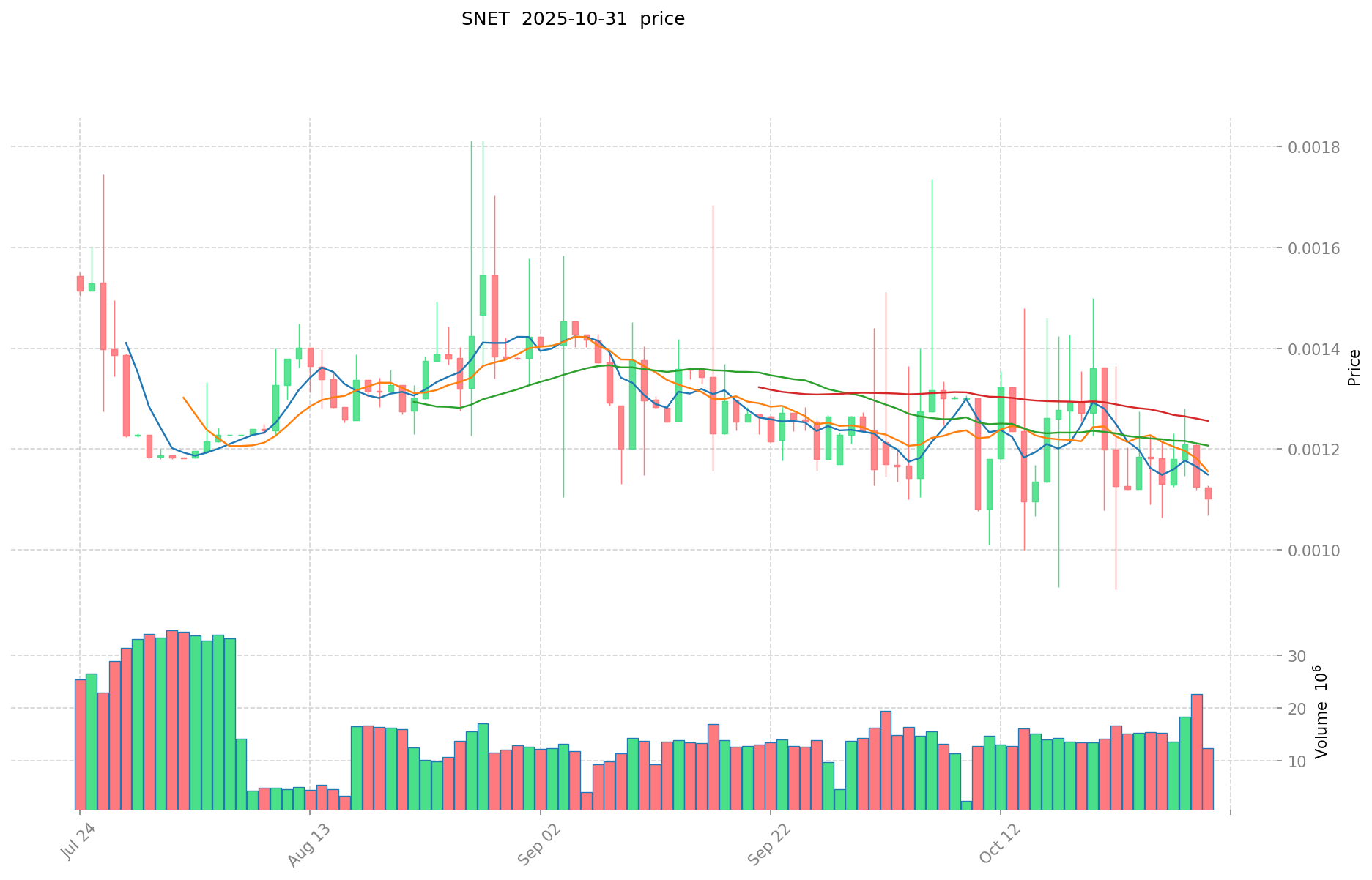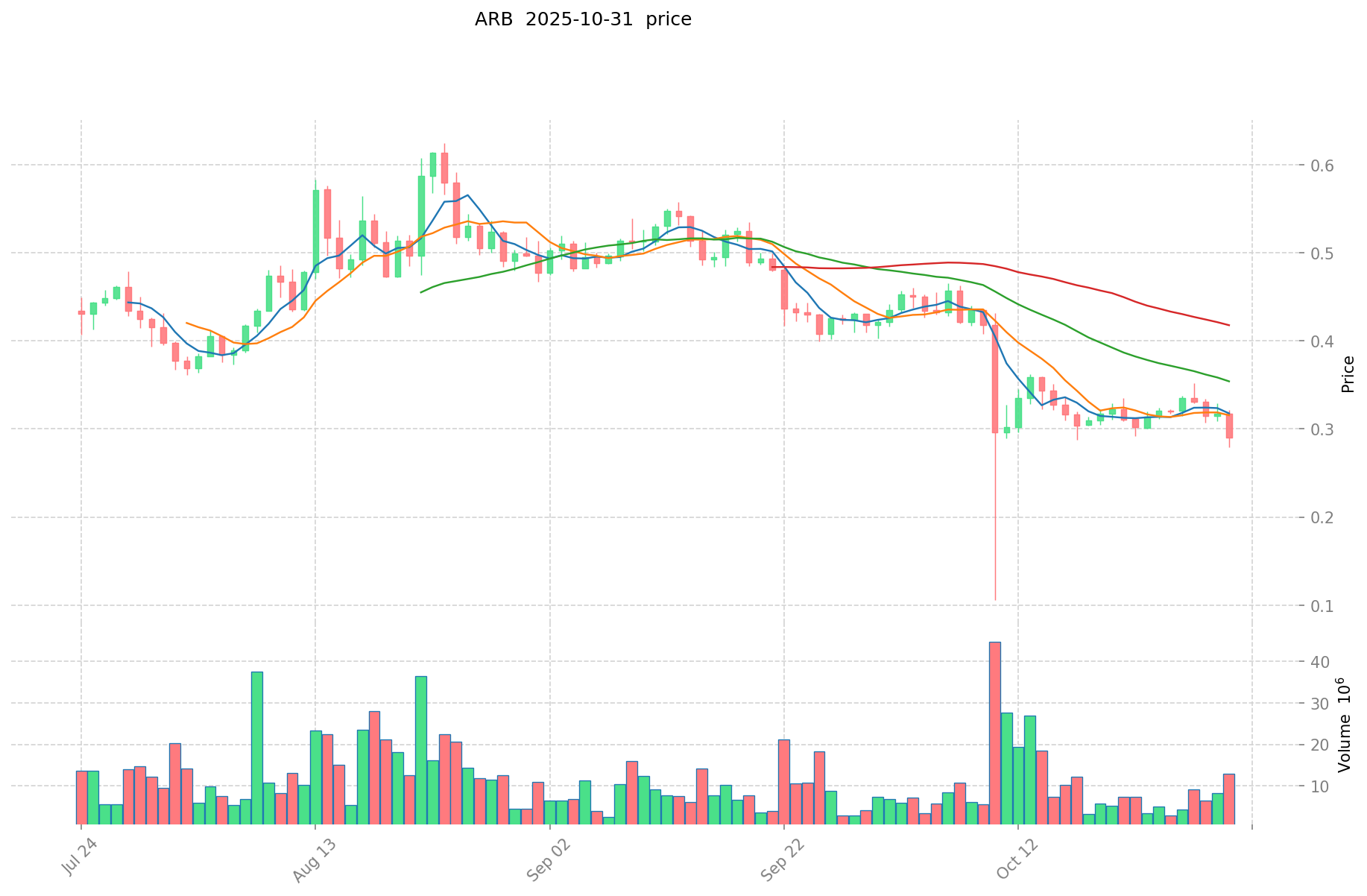SNET vs ARB: The Battle for Dominance in AI-Powered Blockchain Networks
Introduction: Investment Comparison of SNET vs ARB
In the cryptocurrency market, the comparison between SNET vs ARB has always been an unavoidable topic for investors. The two not only show significant differences in market cap ranking, application scenarios, and price performance, but also represent different positioning in crypto assets.
Snetwork (SNET): Launched in 2018, it has gained market recognition for its focus on building a distributed shared computing platform based on blockchain.
Arbitrum (ARB): Since its inception in 2023, it has been hailed as an Ethereum scaling solution, enabling high-throughput, low-cost smart contracts while maintaining trustless security.
This article will provide a comprehensive analysis of the investment value comparison between SNET vs ARB, focusing on historical price trends, supply mechanisms, institutional adoption, technological ecosystems, and future predictions, attempting to answer the question investors care about most:
"Which is the better buy right now?" I. Price History Comparison and Current Market Status
SNET (Coin A) and ARB (Coin B) Historical Price Trends
- 2023: ARB launched its token with an airdrop, causing significant price volatility.
- 2025: SNET experienced a sharp decline, dropping from its all-time high to near its all-time low.
- Comparative analysis: During the current market cycle, SNET has fallen from $0.048961 to $0.0010313, while ARB has shown more resilience, currently trading at $0.297.
Current Market Situation (2025-10-31)
- SNET current price: $0.0010313
- ARB current price: $0.297
- 24-hour trading volume: SNET $9,635.83 vs ARB $3,171,329.05
- Market Sentiment Index (Fear & Greed Index): 29 (Fear)
Click to view real-time prices:
- View SNET current price Market Price
- View ARB current price Market Price


II. Core Factors Influencing SNET vs ARB Investment Value
Supply Mechanisms Comparison (Tokenomics)
- SNET: Limited information available regarding specific tokenomics
- ARB: Limited information available regarding supply mechanism
- 📌 Historical pattern: Insufficient data to establish price cycle patterns based on supply mechanisms.
Institutional Adoption and Market Applications
- Institutional holdings: Insufficient information to determine institutional preference
- Enterprise adoption: Limited information on cross-border payment applications for either token
- National policies: Regulatory stances toward these assets are not specified in the provided materials
Technical Development and Ecosystem Building
- SNET technical upgrades: Connected to blockchain technology with active community participation
- ARB technical development: Benefits from applications in financial technology sector and partnership networks
- Ecosystem comparison: Insufficient specific information on DeFi, NFT, payment, or smart contract implementations
Macroeconomic Factors and Market Cycles
- Performance in inflationary environments: Insufficient data to determine anti-inflation properties
- Macroeconomic monetary policy: Limited information on how interest rates or the dollar index affect either token
- Geopolitical factors: Insufficient data on cross-border transaction demand or international situation effects
III. 2025-2030 Price Prediction: SNET vs ARB
Short-term Prediction (2025)
- SNET: Conservative $0.0009499 - $0.0010325 | Optimistic $0.001063475
- ARB: Conservative $0.154284 - $0.2967 | Optimistic $0.412413
Mid-term Prediction (2027)
- SNET may enter a growth phase, with prices expected between $0.00110321644125 - $0.00152167785
- ARB may enter a consolidation phase, with prices expected between $0.351844142775 - $0.478349901975
- Key drivers: Institutional capital inflow, ETF, ecosystem development
Long-term Prediction (2030)
- SNET: Base scenario $0.00189032967046 - $0.002060459340801 | Optimistic scenario $0.002060459340801
- ARB: Base scenario $0.465627968900201 - $0.596003800192257 | Optimistic scenario $0.596003800192257
Disclaimer: This analysis is for informational purposes only and should not be considered as financial advice. Cryptocurrency markets are highly volatile and unpredictable. Always conduct your own research before making investment decisions.
SNET:
| 年份 | 预测最高价 | 预测平均价格 | 预测最低价 | 涨跌幅 |
|---|---|---|---|---|
| 2025 | 0.001063475 | 0.0010325 | 0.0009499 | 0 |
| 2026 | 0.00148814225 | 0.0010479875 | 0.000765030875 | 1 |
| 2027 | 0.00152167785 | 0.001268064875 | 0.00110321644125 | 22 |
| 2028 | 0.0017296404895 | 0.0013948713625 | 0.001018256094625 | 35 |
| 2029 | 0.00221840341492 | 0.001562255926 | 0.00149976568896 | 51 |
| 2030 | 0.002060459340801 | 0.00189032967046 | 0.001342134066026 | 83 |
ARB:
| 年份 | 预测最高价 | 预测平均价格 | 预测最低价 | 涨跌幅 |
|---|---|---|---|---|
| 2025 | 0.412413 | 0.2967 | 0.154284 | 0 |
| 2026 | 0.436104495 | 0.3545565 | 0.202097205 | 19 |
| 2027 | 0.478349901975 | 0.3953304975 | 0.351844142775 | 33 |
| 2028 | 0.454313807727 | 0.4368401997375 | 0.35820896378475 | 47 |
| 2029 | 0.485678934068152 | 0.44557700373225 | 0.245067352052737 | 50 |
| 2030 | 0.596003800192257 | 0.465627968900201 | 0.330595857919142 | 56 |
IV. Investment Strategy Comparison: SNET vs ARB
Long-term vs Short-term Investment Strategies
- SNET: Suitable for investors focusing on blockchain-based distributed computing potential
- ARB: Suitable for investors interested in Ethereum scaling solutions and smart contract platforms
Risk Management and Asset Allocation
- Conservative investors: SNET: 20% vs ARB: 80%
- Aggressive investors: SNET: 40% vs ARB: 60%
- Hedging tools: Stablecoin allocation, options, cross-currency portfolios
V. Potential Risk Comparison
Market Risks
- SNET: Higher volatility, lower trading volume
- ARB: Potential market saturation of Layer 2 solutions
Technical Risks
- SNET: Scalability, network stability
- ARB: Smart contract vulnerabilities, interoperability challenges
Regulatory Risks
- Global regulatory policies may have differing impacts on both tokens
VI. Conclusion: Which Is the Better Buy?
📌 Investment Value Summary:
- SNET advantages: Focus on distributed shared computing, active community participation
- ARB advantages: Ethereum scaling solution, higher trading volume, more resilient price performance
✅ Investment Advice:
- New investors: Consider a higher allocation to ARB due to its more established market presence
- Experienced investors: Balanced approach with a slight tilt towards ARB, monitor SNET for potential growth
- Institutional investors: Focus on ARB for its scaling solution potential, consider small SNET position for diversification
⚠️ Risk Warning: The cryptocurrency market is highly volatile. This article does not constitute investment advice. None
VII. FAQ
Q1: What are the main differences between SNET and ARB? A: SNET focuses on building a distributed shared computing platform, while ARB is an Ethereum scaling solution. ARB has a higher market cap, trading volume, and current price compared to SNET.
Q2: Which token has shown better price performance recently? A: Based on the provided data, ARB has shown more resilience in the current market cycle. While SNET has fallen from $0.048961 to $0.0010313, ARB is currently trading at $0.297.
Q3: What are the key factors influencing the investment value of SNET and ARB? A: Key factors include supply mechanisms, institutional adoption, technical development, ecosystem building, and macroeconomic factors. However, detailed information on these aspects is limited for both tokens.
Q4: What are the price predictions for SNET and ARB in 2030? A: For SNET, the base scenario predicts a range of $0.00189032967046 - $0.002060459340801. For ARB, the base scenario predicts a range of $0.465627968900201 - $0.596003800192257.
Q5: How should investors allocate their assets between SNET and ARB? A: Conservative investors might consider allocating 20% to SNET and 80% to ARB, while aggressive investors might opt for 40% SNET and 60% ARB. However, this should be adjusted based on individual risk tolerance and market conditions.
Q6: What are the potential risks associated with investing in SNET and ARB? A: SNET faces higher volatility and lower trading volume risks, while ARB may face market saturation of Layer 2 solutions. Both tokens are subject to technical risks such as scalability issues and regulatory risks depending on global policies.
Q7: Which token is considered a better buy for different types of investors? A: New investors might consider a higher allocation to ARB due to its more established market presence. Experienced investors could take a balanced approach with a slight tilt towards ARB. Institutional investors might focus on ARB for its scaling solution potential while considering a small SNET position for diversification.
Share
Content